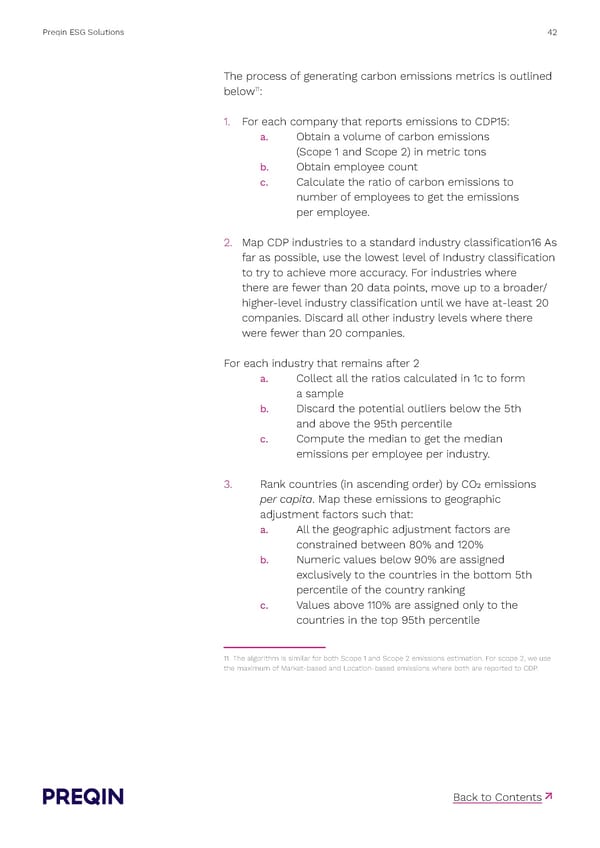Preqin ESG Solutions 42 The process of generating carbon emissions metrics is outlined 11: below 1. For each company that reports emissions to CDP15: a. Obtain a volume of carbon emissions (Scope 1 and Scope 2) in metric tons b. Obtain employee count c. Calculate the ratio of carbon emissions to number of employees to get the emissions per employee. 2. Map CDP industries to a standard industry classi昀椀cation16 As far as possible, use the lowest level of Industry classi昀椀cation to try to achieve more accuracy. For industries where there are fewer than 20 data points, move up to a broader/ higher-level industry classi昀椀cation until we have at-least 20 companies. Discard all other industry levels where there were fewer than 20 companies. For each industry that remains after 2 a. Collect all the ratios calculated in 1c to form a sample b. Discard the potential outliers below the 5th and above the 95th percentile c. Compute the median to get the median emissions per employee per industry. 3. Rank countries (in ascending order) by CO2 emissions per capita. Map these emissions to geographic adjustment factors such that: a. All the geographic adjustment factors are constrained between 80% and 120% b. Numeric values below 90% are assigned exclusively to the countries in the bottom 5th percentile of the country ranking c. Values above 110% are assigned only to the countries in the top 95th percentile 11 The algorithm is similar for both Scope 1 and Scope 2 emissions estimation. For scope 2, we use the maximum of Market-based and Location-based emissions where both are reported to CDP. ↗ Back to Contents
 Preqin ESG Solutions Methodology Page 41 Page 43
Preqin ESG Solutions Methodology Page 41 Page 43